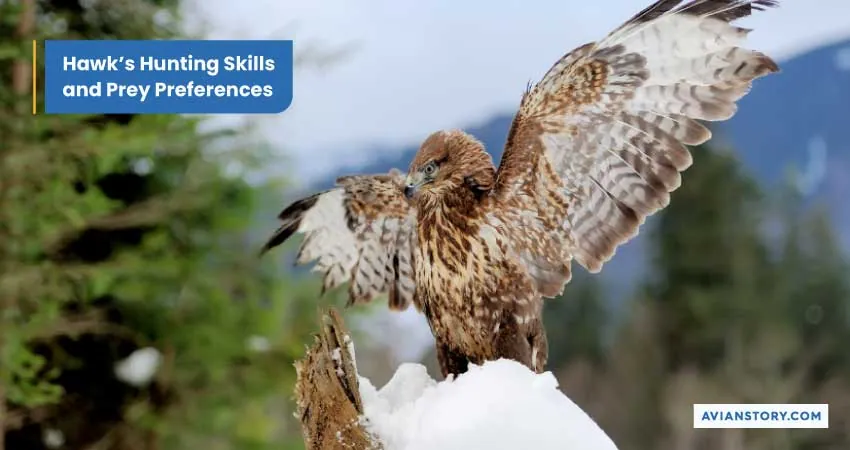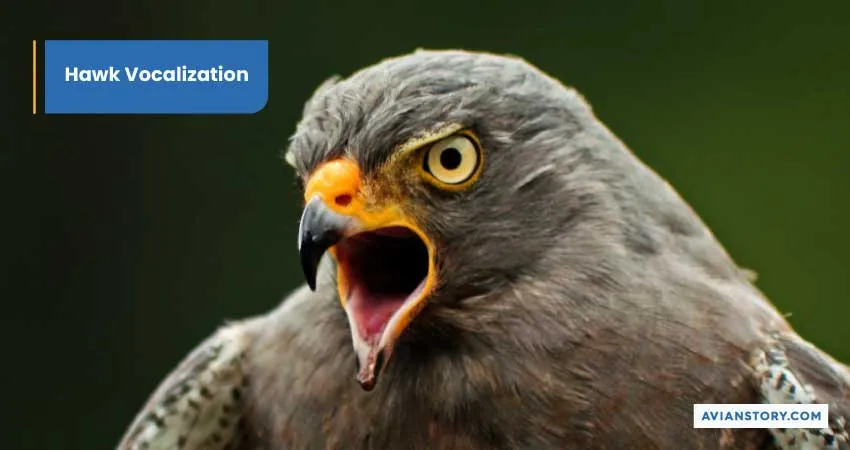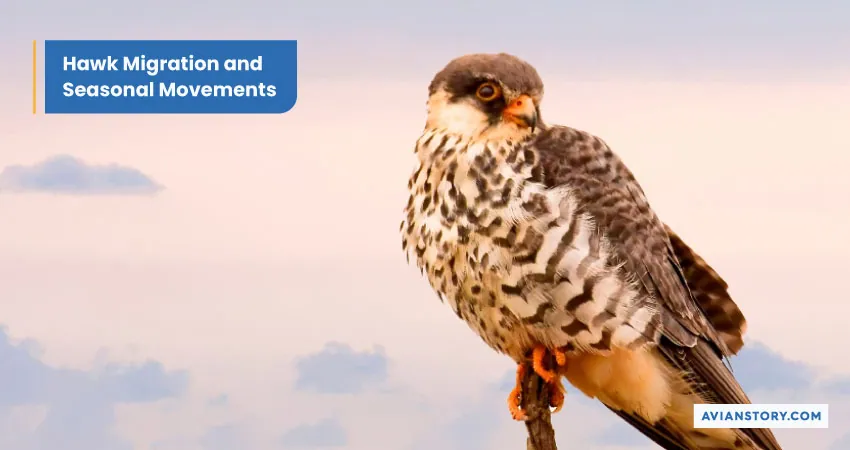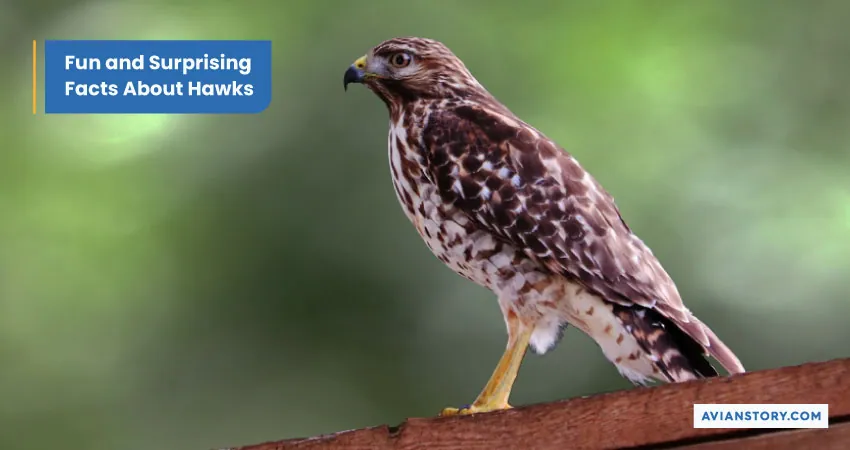20 Facts About Hawks – You Need To Know
Hawks are renowned birds of prey known for their keen eyesight, graceful flight, and impressive hunting skills. With over 200 species found in diverse habitats worldwide, hawks captivate bird enthusiasts and nature lovers alike.
These majestic predators come in a variety of sizes, colors, and behaviors, making them an intriguing subject of study and admiration.
We will uncover 20 fascinating Hawk facts that will amaze and entertain you. From their incredible adaptations to their intriguing behaviors, we’ll reveal the secrets behind these remarkable creatures. And that’s not all! We’ll also delve into the lighter side of hawks, sharing amusing anecdotes and funny quirks that highlight their unique personalities.
By the end of this article, you’ll have gained a comprehensive understanding of hawks and their world. Whether you’re a bird enthusiast, a nature lover, or simply curious about these magnificent birds, this article will provide valuable insights
20 Most Interesting Facts About Hawks
Here are some fascinating Hawk facts in the given table for a quick overview.
| Aspects | Description |
| Hawk Vision | Exceptional eyesight for spotting prey |
| Wingspan | 2 to 5 feet, species-dependent |
| Flight Speed | Up to 120 mph (species-dependent) |
| Hunting Techniques | Soaring, hovering, stooping |
| Diet | Carnivorous: small mammals, birds, reptiles, insects |
| Territorial Behavior | Defends nesting and hunting areas |
| Migratory Patterns | Some species exhibit long-distance migration |
| Communication | Vocalizations: screeches, cries, calls |
| How Long Do Hawks Live? | Varies by species, up to 20+ years in the wild |
| Conservation Status | Some hawks are threatened or endangered due to habitat loss and human activities |
| Relationship with Humans | Featured in cultural and artistic representations |
Hawks’ Physical Characteristics and Abilities

One of the interesting Hawk facts is it possesses a mesmerizing combination of physical characteristics and abilities that make them the epitome of avian predators. Let us know more about it below:
Hawk’s Impressive Vision Range
Hawks have a panoramic view like no other! With their eyes positioned on the sides of their head, they can see in almost all directions simultaneously, minimizing blind spots and maximizing their ability to spot movement or potential danger.
Exceptional Speed and Agility in Flight
Hawks are nature’s speedsters! With their powerful wings and streamlined bodies, they can achieve speeds that leave other birds trailing behind. Witnessing a hawk zooming through the air at such incredible velocities is a testament to their remarkable flight capabilities.
Variations in Size Among Different Hawk Species
Hawks exhibit a wide range of sizes, from smaller species measuring around 12 inches in length to larger species that can reach up to 30 inches or more. This diversity in size allows hawks to occupy different ecological niches and adapt to various environments.
Hawks’ Hunting Skills and Prey Preferences

Let us know interesting Hawk facts about their hunting skills below
The Hunter’s Arsenal: Silent Wings
Hawks have a secret weapon in their arsenal—silent wings. Their feathers have evolved with serrated edges, creating a whisper-quiet flight. They’re like the stealth bombers of the bird kingdom, gliding through the air with ninja-like silence.
It’s the perfect advantage for surprising their prey and launching their attacks before their victims even know what hit them.
Carnivorous Delights: A Menu Fit for Royalty
Did you know that hawks have specialized adaptations in their beaks and talons that allow them to capture and devour their prey efficiently? They have sharp, hooked beaks that are like precision cutlery, designed to tear into flesh, while their strong, razor-sharp talons. It acts as the perfect utensil to secure and handle their meals with ease.
Nature’s Pest Managers: A Balance in the Ecosystem
One of the interesting Hawk facts is that it is nature’s ultimate pest manager, patrolling the skies and keeping populations of rodents and other small mammals in check. A single hawk can consume hundreds of rodents in a year, helping to prevent crop damage and the spread of diseases.
Their predatory prowess serves as a natural form of pest control, ensuring a balanced and healthy ecosystem.
Unique Nesting Habits and Reproduction

Here are some unique Hawk facts about there habits and reproduction:
Intricate Nest Building Process: Engineering Marvels
Hawks are master engineers when it comes to nest building. They carefully select sturdy branches and twigs, intricately weaving them together to create a secure and comfortable nest for their young.
But what’s even more impressive is that hawks often reuse their nests year after year, reinforcing and expanding them to accommodate growing families.
Monogamous Mating and Nesting Season: A Bond for Life
Hawks are known for their strong sense of commitment when it comes to their partners. Once they find their mate, they form a lifelong bond, remaining faithful to each other season after season.
Their monogamous nature is a testament to the deep emotional connection hawks share, making them a symbol of loyalty and devotion in the avian world.
The Fascinating Ritual of Courtship Displays: Love Takes Flight
During courtship, hawks engage in elaborate aerial displays that showcase their agility, strength, and devotion to their prospective partners. They engage in thrilling acrobatics, soaring together in synchronized flight and exchanging food as a symbol of courtship.
These mesmerizing displays not only strengthen the bond between mates but also serve as a visual spectacle for lucky observers.
Hawk Species and Their Distribution

Let us know interesting Hawk facts about Hawk Identification and species below
Common Hawk Species Found Worldwide: A Global Presence
Hawks are a diverse and widespread group of birds, with various species found on every continent except Antarctica. From the Red-tailed Hawk of North America to the Black Kite of Asia, these majestic birds have thrived in varied ecosystems around the world.
Hawk Adaptations to Different Habitats and Climates: Nature’s Versatile Predators
Hawks have evolved remarkable adaptations that enable them to thrive in different habitats and climates. Hawks adapt well to different surroundings. Open country hawks have strong, broad wings for soaring.
Forest-dwelling hawks can penetrate dense plants because of their small wings. These adaptations illustrate their adaptability as top predators that can hunt in many environments.
Notable Endangered Hawk Species and Conservation Efforts: Protecting the Precious
Unfortunately, several hawk species around the world are facing the threat of extinction due to habitat loss, pollution, and illegal hunting. Conservation organizations and dedicated individuals are working tirelessly to protect and preserve these precious birds.
Habitat restoration, captive Hawks breeding programs, and public awareness campaigns can be done. Because Hawks’ breeding performance depends on their secured habitat.
These efforts aim to safeguard the future of endangered hawk species and maintain their ecological importance.
Hawk Vocalization

Some of the interesting Hawk facts about its amazing way of vocalization are given below.
Masterful Mimics
Hawks possess an astonishing talent for mimicry that would make even the most skilled vocalists envious. These avian maestros, especially the charismatic Red-tailed Hawks, can flawlessly imitate the calls of other bird species. With their repertoire of sounds, they skillfully lure in unsuspecting prey or send a clear message to trespassers encroaching on their domain.
Melodious Dialects
Just like human languages, hawks have their own unique dialects. Different populations of hawks across the globe boast distinctive vocal patterns and regional accents. It’s a symphony of dialects, with each group composing its own signature tunes.
These avian linguists engage in vocal conversations that reveal their rich cultural heritage and captivating diversity.
Harmonious Whistling Wings
As hawks soar through the sky with remarkable agility, their wings become nature’s very own musical instruments. The rapid movement and precise aerodynamics of their feathers create a mesmerizing phenomenon known as “whistling wings.”
The air rushes through the gaps between their feathers, producing a hauntingly beautiful melody that resonates with every graceful flap. It’s a captivating serenade that embodies the spirit of these magnificent creatures.
Hawk Migration and Seasonal Movements

Let us know interesting Hawk facts about migration and their movements below.
Patterns of Hawk Migration and Important Flyways: The Great Skyward Journey
If you are wondering, “Do hawks migrate?” The answer is that hawks undertake incredible migratory journeys, spanning thousands of miles, as they navigate along established flyways. These migration patterns are driven by seasonal changes and the search for favorable feeding grounds.
Some hawk species, like the Broad-winged Hawk, gather in large flocks called kettles, creating awe-inspiring spectacles as they ride thermal updrafts and soar across vast distances.
Do Hawks Fly in Groups?
The broad answer to this question, “Do Hawks fly in groups?” is- While hawks are typically solitary birds, some species exhibit social behavior and may be observed flying in groups under certain circumstances. This behavior is commonly seen during migration, as hawks take advantage of thermals and updrafts to conserve energy.
So, one might wonder, What is a group of Hawks called at that time? The answer is- They form loose flocks called “kettles” and soar together in a swirling, spiraling pattern.
These majestic group flights create a captivating spectacle in the sky and provide opportunities for hawks to navigate and communicate with their fellow migratory companions.
Fun and Surprising Facts About Hawks

There are a lot of other fun Hawk facts that you are missing out on. Here are some given below:
Unusual Courtship Displays and Mating Rituals: Love in the Air
Hawks engage in elaborate courtship displays to impress potential mates. These displays often involve acrobatic aerial maneuvers, synchronized flights, and mutual food offerings.
For instance, the male Red-tailed Hawk performs breathtaking aerial displays. It includes high-speed dives and barrel rolls to demonstrate his agility and prowess, captivating the female and strengthening their bond.
Intriguing Hawk Behavior and Social Interactions: Insights into Avian Life
Hawks exhibit fascinating behaviors and social interactions within their avian communities. Some species, like the Harris’s Hawk, display cooperative hunting strategies, working together in groups.
Hawks also engage in elaborate territorial displays, vocalizations, and intricate hierarchies, providing valuable insights into avian behavior and social dynamics.
Hawk Nesting
Hawks exhibit remarkable nesting behaviors, and some species build nests of impressive size and durability. The largest hawk nesting, can measure up to 10 feet in diameter and weigh over a ton.
These massive structures are often reused and expanded upon year after year, creating intricate nests that provide a sturdy home for the growing hawk family.
Watch this video to learn more interesting facts about Hawks.
Conclusion
These fascinating Hawk facts reveal their majestic and remarkable nature. Hawks rule the sky with sharp eyesight, wide vision range, and impressive speed and agility.
Hawks are skilled hunters with a carnivorous diet, playing a crucial role in pest control and ecosystem balance. Hawks’ nesting, courtship, and mating reveal their complex social and reproductive lives. After learning these 20 Hawk facts, we can truly admire these amazing birds and their vital role in nature.
